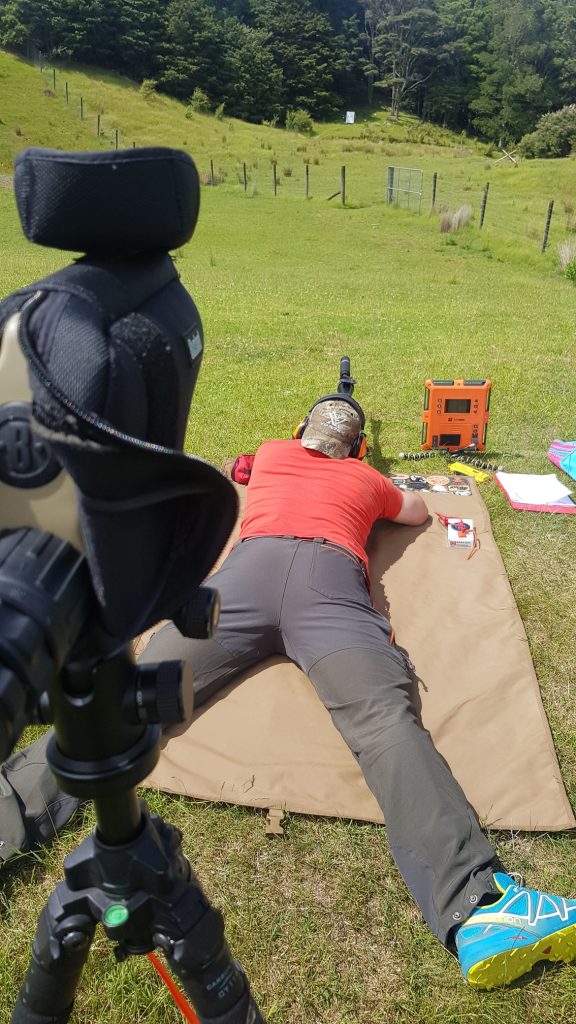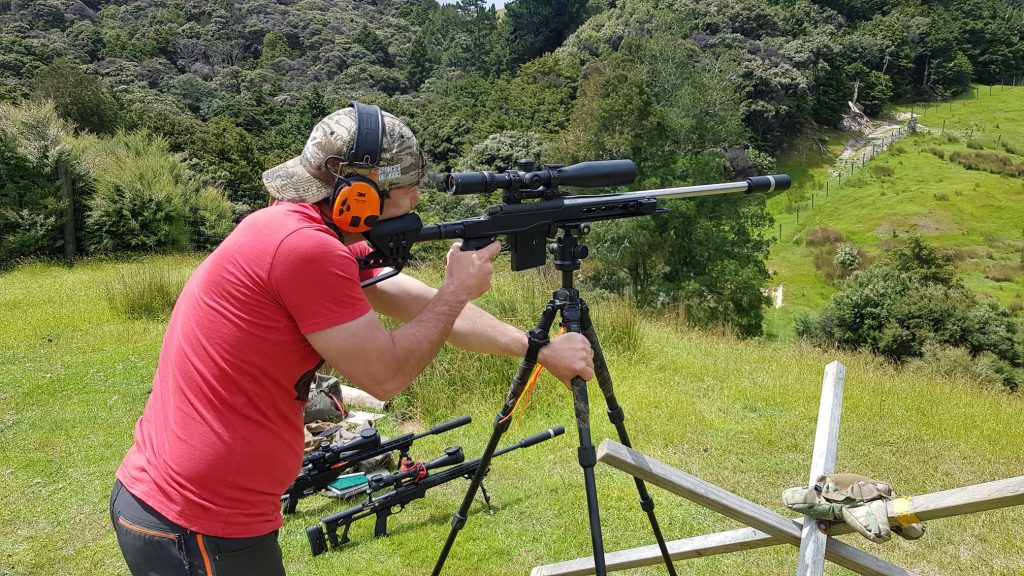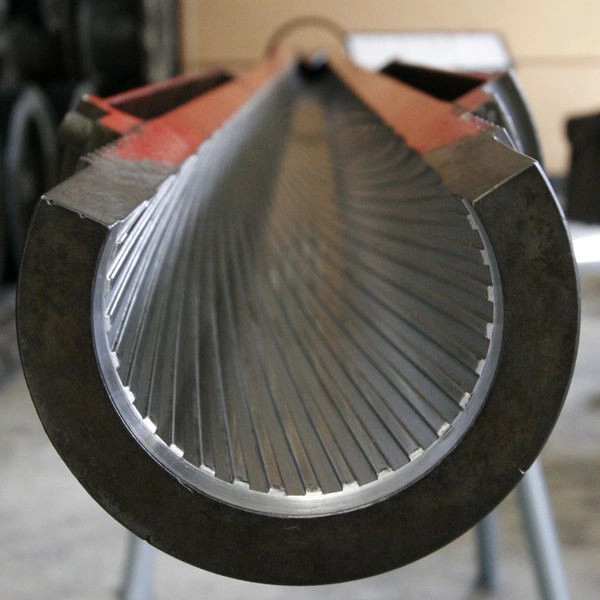We held our first weekend-long shooting course at the weekend. And by all accounts, it was a great success. Three shooters (one collected from the Airport having flown up from Christchurch) from around the country came up to Balnagown for a couple of days of learning the fundamentals of shooting, setting up their rifle and hitting targets out to distance.
Friday
Friday night was an opportunity to meet each other, settle into the lodgings and learn a little about our gear. After dinner, we sat down in the Hunting Hut to talk rifles, scopes and related equipment. We had already established a minimum equipment requirement – and the intent was more of the tactical, longer-range side of things. In the end, we had two Tikka TAC A1’s (one in 6.5, one in 308) and a Bergara BMP.
A very nice Steiner MX5 was sitting on top of the 6.5 TAC A1. I am always happy to see the Steiners turn up, and have been a long time fan of the brand.
Saturday
Saturday was primarily about the fundamentals, and, the training was to be done on the 22LRs. Much cheaper, less recoil – the shooters could focus on their body position, aiming and follow-through, without worrying about the noise and recoil a centrefire would introduce. Having a lower level of sound also meant that we were able to converse a lot easier – and there was a lot of discussions and hands-on application of getting straight behind the rifle, ensuring good NPA and sight alignment and proper follow-through.
Like most of the courses, we had guys tending to drift back over out of square, coming quickly off triggers and working through getting comfortable behind a rifle. We ran a series of drills to reinforce the teachings of the morning – starting untimed, then introducing a beeper to see what would happen. What happened, with a bit of coaching, is that the guys were able to keep their initial level of accuracy, but half their time of engagement. Reinforcing the basics, while ensuring a bit of efficiency and focus. It was a rather enlightening drill for the guys.
We then switched over to some positional work – discussing how the fundamentals continue to apply, regardless of the height of the front support. Starting with a saw-horse, and then shifting to the Tank Trap, we discussed how to approach the targets, how to get a solid position, and, ultimately, how to shoot them safely.
Targets
Sam from Rifle Ranch Targets had set up his new rimfire steel set for the weekend. It consists of a variety of targets suitable for all rimfire cartridges. The set includes three round targets of varying sizes and stands, a know-your-limits rack and a spinner. The spinner has two settings, easy and hard.
The kit is well built, from 6mm AR500 steel, and fits together smartly. Packing up into a single sack as well. It makes for a very cool, portable target setup that I imagine is going to be very popular with guys setting up ranges on the back of the farm, as well as some of the competition shoots around the country.
The spinner provided enough of a challenge for the shooters, and we ended up the 22 section of the course by setting up three stages as you would see as a competition. Rotating around the course of fire, the attendees got to experience their first field shooting competition!
Bring out the big guns!

Well… relatively speaking. After lunch, we got out the centrefires, with the intent to check setups, confirm zeroes and gather some data for the ballistics session to follow. Once we had the velocities recorded, we packed up the rifles for the day, and headed back to the hut for a brew and a talk about all things ballistic.
Normally, at the setup courses, I am working with a limited time, so I often have to do a lot of the ballistic side of things for the clients. This time, and given the nature of the shooters and setups – I was there to help them set up their own calculators and develop some try data to then be confirmed. On the day we were using Hornady’s 4DOF software and had a couple of Kestrels to work with. I used the setup of the calculators to also frame the discussion about ballistic theory – what a BC was, what factors were important, what didn’t really matter, what just got lost in the noise. We also discussed some methods of creating quick rules, data management and plenty of other subjects.
The day was a nice mix of hands-on instruction, practical practice and theory. We even had a little ‘free time’ for the lads to just plink away with the rimfires. After another big feed, it was time to hit the sack in preparation for another big day of shooting on Sunday.
Sunday
Sunday started with some more dot drills to warm up the shooters. Utilising the 22s again – it was an easy way to get the shooters back in the groove, and revisit and reinforce the fundamentals learnt the day before. Another mini-competition and we were ready to stretch the legs out on the centrefires.
At Balnagown, we have steel at 300, 550 and 700. The 300, generally, is a fairly easy target for the guys. Once they have the fundamentals sorted, with some basic try data – the reality is, wind doesn’t cause too much of an issue. Plenty of first round hits with a bit of refinement then progressing them onto the smaller round target setup as well. 550 was much the same – with a little bit more wind to contend with.
Balnagown is a bit of a tricky proposition when it comes to wind sometimes – Sunday was no different. While discussing wind direction, recalling our previously nights discussion about wind angles and co-sign, and developing some wind brackets to shoot within, I pointed out, once the solution was ready to test out, that the wind had switched direction already. This was a continuing trend for the rest of the day.
It is a bit of a challenge for the newer shooters – because it can become a little frustrating with a switchy headwind. It’s just enough to push people off one side of the steel, correct, and be pushed off the other. However, there were still more hits than misses.
Before we progressed to 700 meters, we grabbed the Tank Trap, and the lads also had the opportunity to shoot positional out to 550. A couple of rounds there, and we briefly grabbed a tripod to introduce a very practical, and accurate method of creating a solid position, somewhat irrespective of what position presented itself.

Hits on, and it was time to head up the hill and go play in the wind even more!
The 700 meter firing position is on top of a rather windy ridge. Combine that with firing over a valley, up another gut, and you are looking at at least three switching and hard to read wind zones. Some days they cancel themselves out, others, you are left frustrated second guessing yourself in regards to wind calls and second shot corrections. The key here, as was displayed, is a quick follow up shot. If you see your hit or miss and can get that second round off in a timely manner, you end up shooting in the same conditions. Too slow, and the wind has already switched up on you.
The lads did well, considering the tricky nature of the shooting, and with plenty of steel ringing under the belt, we headed back down for a debrief and we were done for the weekend!
Thanks Kerry for running the “weekender event” I had a great time, enjoyed it and got a lot out of it. Going back to basics and a solid base foundation and building step by step was very useful as not often does the opportunity to do so come up. Was great to reach out to 550m and then 700m and see the influence of both the shooter and with the 700m, in particular, the inconsistent environmental conditions impacting hit rate.
Still recognising things I learnt that hadn’t noticed at the time… eg. I used to have trouble staying on target after firing, now with better recoil management, I’m on target after firing, awesome. I now also have some constructive exercises from you to continue to work on my shooting in my own time.
I highly recommend this event to anyone looking to improve their shooting, as well as their understanding of ballistics specifically as it relates to their rifle and cartridge”
Sean. Tauranga









